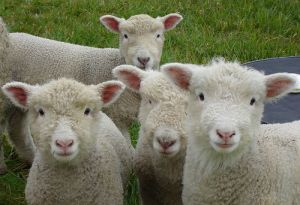The term renewable resource is defined as: a natural resource with the ability of being replaced through biological or natural processes and replenished with the passage of time.
The passage of time referred to in the definition of a renewable resource is relatively short. To put it into perspective it is a resource that you should see naturally renewed many times during your lifespan.
Examples of Renewable Resources are:
Animals/Fiber (Wool)
Insects
Reptiles
Plants
Trees/Timber
Water (Hydropower)
Grass
Air/Oxygen (Wind energy)
The Sun (Solar energy)

Leaping Sheep Wool Dryer Balls are 100% natural wool and a 100% natural renewable resource.
Another set of natural resources found on Earth are referred to as non-renewable. It doesn't have a good ring to it, does it?
The term nonrenewable resource is defined as: Any natural resource from the Earth that exists in limited supply and cannot be replaced if it is used up; also, any natural resource that cannot be replenished by natural means at the same rates that it is consumed.
Once a nonrenewable resource is removed from the Earth it will certainly not be seen again in our lifetime or that of the next generation.
Examples of Nonrenewable Resources are:
Fossil Fuels
Oil
Coal
Copper
Diamonds
Natural Gas
Iron Ore
Minerals
Gold
Silver
Platinum
Rocks, etc.
Dryer sheets are most often made from a non-woven fabric web of fine polyester fibers. Some are made of polyurethane foam. Polyester and polyurethane are petroleum based products. Unrefined petroleum is a "crude oil" and a nonrenewable resource.
From the Earth - To the Earth

No comments:
Post a Comment